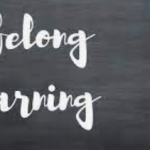I thought that as a ten-year veteran teacher I had seen a lot of things, but this year as support staff (read: unexpected substitute teacher; lunch duty supervisor; occasional coach; and even an interventionist, my actual job) I have seen a whole lot more. I see and hear bits and pieces of lessons as I walk through the halls. I see teachers rushing to pick up students at the end of specials or lunch. I see students running to the bathroom or the nurse with a trash can in their hands. Every now and then I see the blur of the little runners that we have on campus with teachers hot in pursuit. One thing that stands out more than all the rest is this: Teaching is different this year.
Two years ago when the world shut down, teaching quickly became different as we scrambled to convert our lessons into a digital format and began teaching remotely. Last year was different, too, with switching between remote and in-person learning, teaching in a hybrid format, and all the mitigation strategies that were implemented. This year we resumed in-person learning with some mitigation strategies in place, but teaching has not returned to how it was in the Pre Covid Era. Why?
It might be because the students are different. The students we have now are not at the same place as students traditionally have been in the PCE. Academically many students are behind where they typically are, but not so far behind that it is impossible to teach grade-level standards; socially many students struggle with working with others and there are quite a few students at each grade level that are having a difficult time forming friendships due to antisocial behavior; behaviorally many students seem to think learning is passive and by simply listening to the teacher they will earn a good grade and are struggling with producing work. Two years ago, everything changed overnight and it makes sense that students will be different as they come out on the other side. However, it also might be because the teachers are different, too.
Teachers, like our students, are only human. Our worlds were rocked overnight two years ago, too, and many teachers have come to question the things they know about the profession. Is this the best way to teach? When, and in what ways, is it appropriate for me to use technology to teach? Do I teach from a created set of slides, or do I teach off the cuff with hard copy resources? How can I get the students to collaborate and work together? Are the students ready to be released to work independently or do I need to keep them with me for the duration of the lesson? Which way did the runner go down the hallway? It is not just new teachers asking these questions; the veterans are asking, too.
Asking questions and reflecting on your teaching practice is not a bad thing, but it seems to have shaken the teacher’s confidence. It certainly has shaken mine. Try to look at it as an opportunity for growth, combining your knowledge and expertise from the past with the new learning of the past two years. Keep the new strategies that work with your teaching style and your students, and let the other ones go. This new era, The Aftermath, will combine the best of both worlds and help us reach our students in new ways and will help us grow as educators.
What is one thing that you will continue to do with your students in The Aftermath?









